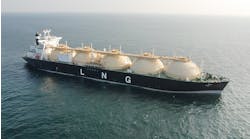The scene at Shell’s Real Time Operation Center (RTOC) is reminiscent of NASA’s Mission Control. State-of-the-art visualization technology allows groups of experts to remotely monitor complex engineering operations as they happen thousands of miles away. However, when a geophysicist gives the command to “beam me up,” he is asking for the transmission of real-time measurements, multiple data streams, or live video to be projected into an array of information beaming in from a remote location. Shell’s RTOC in Houston has a multi-disciplinary group of experts providing input in real time to projects around the world including deepwater drilling operations in Brazil, Egypt, and Nigeria.
Although the ability to transport people from one part of the world to another in a matter of seconds is futuristic, the current reality is that at the throw of a switch, key Shell experts can provide live input into one or many projects taking place simultaneously worldwide.
Via RTOC hubs and smaller, linked locations, Shell is a major player in collaborative virtual environments, rapidly establishing a global network to link its operations and to share data and expertise as never before. The result is a significant impact in terms of project delivery and operational excellence.
Resource pool
“Previous operational models meant transporting expert personnel to the rig site - a costly and time-intensive practice,” says Afif Halal, EP Wells Business Improvement manager and global business champion for RTOC. “Now, the critical mass of expertise is shifting onshore with the ability to deploy this specialist resource pool safety and efficiently to a variety of highly complex projects across the globe.
“From a technology perspective, it means that the expert sitting in any RTOC hub or satellite around the globe has the ability to monitor drilling or completion parameters, detect potential problems, communicate these to the operations supervisor, and therefore, to enable mitigating action to take place before the event occurs. That is true preventative, pro-active, real-time decision making,” says Halal.
“The term ‘RTOC’ is actually a misnomer,” says Eric van Oort, RTOC team leader for the Americas. “We do far more in the up-front planning of wells by using the latest tools for 3D well visualization.
“One of the key success factors with RTOC is the ability to provide a collaborative working environment for both the subsurface specialists, such as geologists, geophysicists, and petrophysicists, and the well engineering staff. As the data comes in, it’s at the fingertips of the Well Delivery Team, who can immediately decide if the subsurface is coming in as expected. The collaborative planning sessions really speed up the well trajectory selection, and that collaboration continues into the real-time well delivery,” he says.
RTOC also facilitates investigation of well delivery and asset planning scenarios.
“We have evaluated eight different development scenarios for 20 wells each at the Great White prospect in the Gulf of Mexico. Previously, evaluating just one scenario was a lot of work. So, now we can pick the best possible solutions for well placement and subsurface targets,” van Oort says.
Another main driver behind RTOC is the significant reduction or even elimination of non-productive time. Rig operations time is lost through activities not always performed at optimal speeds.
This inefficiency, known as “invisible lost time,” now is being tackled. A new system automatically detects rig activity and applies “smart” algorithms to determine what the rig actually is doing and how efficiently it is doing it. The system can detail the amount of time it takes to make a connection to a drillstring and allows comparisons from well to well, rig to rig, and even rig crew to rig crew, to highlight opportunities for improving performance. With recent increases in rig day rates, the drive to control unit technical cost is high, so rigs must operate at optimum efficiency.
Young professionals
Another positive contribution RTOC makes is in the coaching and mentoring of young professionals. Because the RTOCs carry out detailed monitoring of many aspects of global operations in real time, they provide an unparalleled learning environment.
Diverse types of geo-technical, drilling, or production operations can be observed as they happen from the safety of an operations room. With RTOCs designed to handle simultaneous monitoring of a significant number of concurrent rig operations in different time zones and with 24-hour monitoring, 365 days a year, there is always an opportunity to look through a window onto the real-time world of exploration and production.


